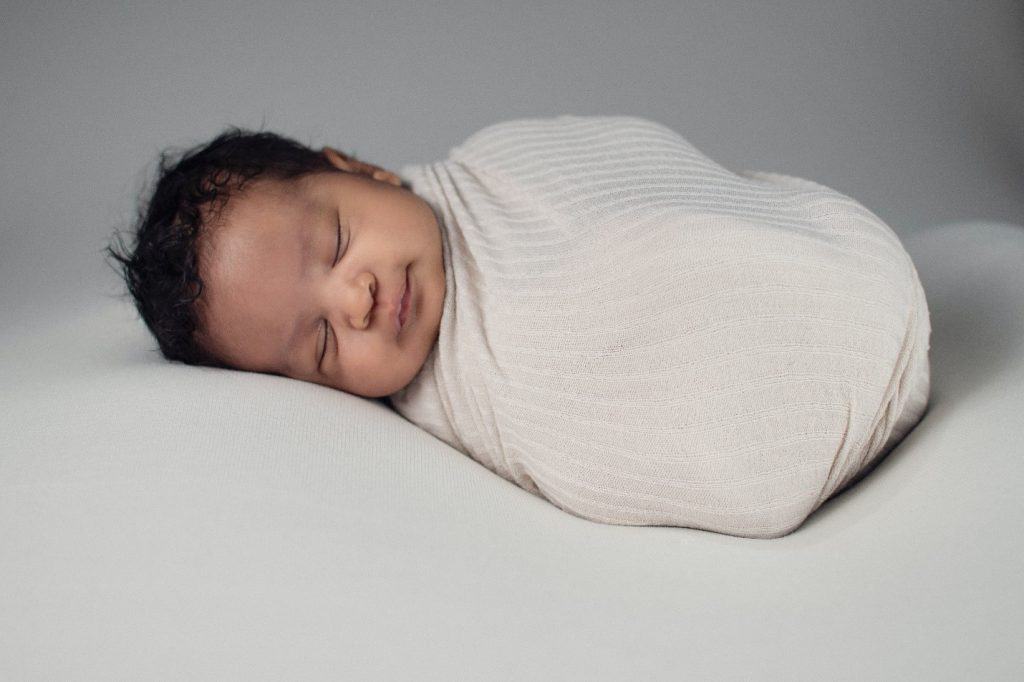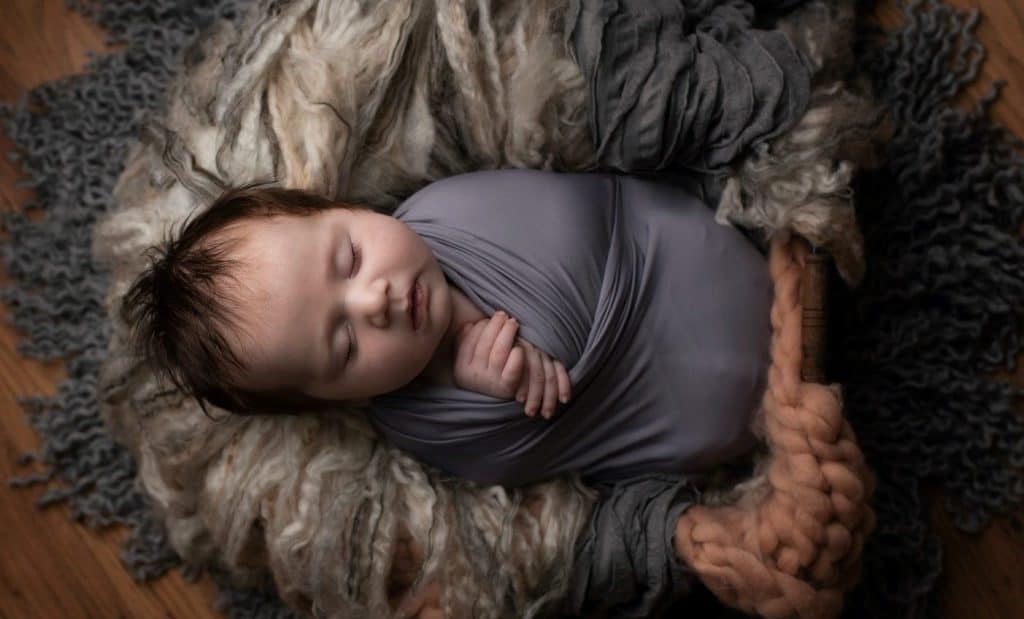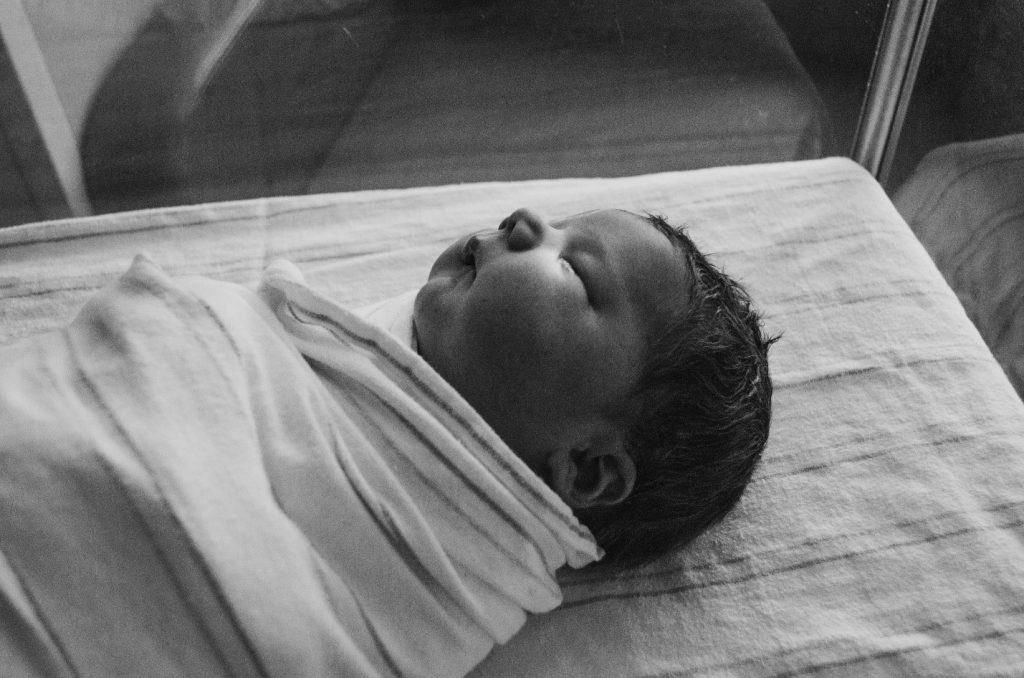Caring for a baby means having to buy a lot of things. While each item might not be too expensive, they quickly rack up quite the amount. Thus, it is important to make sure you only buy what you essentially need. For example, you might ask yourself: how many swaddles do I need?
There are a number of factors to consider when deciding how many swaddles you will need such as the different types of swaddles, the temperature of your area, the function of swaddle blankets, the baby’s health, and laundry. On average, many parents would say 6-10 swaddles should suffice.
This article will discuss swaddling and the factors to consider when deciding how many swaddles you should get.
What is Swaddling?

Swaddling is the technique of restraining a baby (to some degree) with a breathable fabric or blanket. Although there may be variations, it is a universally practiced technique all around the world since before the 18th century.
In 2007, a review paper published in Pediatrics looked at all other scholarly studies done on swaddling to collate all its known advantages and disadvantages.
Perhaps the most common benefit of swaddling is that it helps soothe the infant. It is believed that the tightness of the swaddle somewhat resembles the environment of the womb, thereby imparting a sense of calmness and security in the baby.
With its capability of soothing an infant, swaddling can therefore help reduce crying, lessen emotional distress, improve sleeping behavior, and more.
Swaddling also helps babies regulate their temperature since their extremities are closely bound to their bodies. However, this also means hyperthermia is a potential risk when swaddling is misapplied.
How to Swaddle a Baby
- Get a swaddle and lay it on a flat surface. It should be laid out diagonally, with two corners pointing left and right, one to the top, and one toward you.
- Fold the top corner down halfway to the center.
- Lay the baby facing up on the swaddle. The baby’s shoulders should be just below the crease created when folding the top corner down.
- Take the right corner and fold it all the way across the baby’s body, tucking it in underneath the baby. Make sure that the baby’s arms are in a comfortable position (e.g., down by their sides, together in front of them, etc.).
- Take the bottom corner and fold it all the way up and over the baby’s body, tucking in either under the baby’s chin or behind one of their shoulders.
- Take the left corner and fold it all the way across the baby’s body, tucking it underneath the baby.
- It is important to remember to ensure that each corner should be snuggly folded and tucked to ensure that the swaddle will not come undone so quickly.
How Many Swaddles Do You Need?

There is no one right answer to how many swaddles you would need throughout the course of parenting your infant. There are a variety of factors that affect this value. Thus, it is recommended to familiarize yourself with these factors to determine for yourself how many you think you would need.
-
Different Types of Swaddles
The first thing to consider is that there are various types of blankets being used for swaddling. Namely, there are traditional swaddles and swaddle sacks.
Traditional swaddles are typically basic blankets, such as receiving blankets. While many consider receiving blankets to be synonymous with swaddles, there are certain distinctions. For example, a swaddle is a material specifically used for swaddling.
On the other hand, a receiving blanket is an all-purpose blanket that can be used in a variety of ways. While it can be used for swaddling a baby, it can also be used in other situations.
Traditional swaddles and blankets are highly recommended for their versatility – which is essential for preventing nurseries to be overrun with redundant items.
Meanwhile, swaddle sacks are quite similar to basic blankets. However, these are materials that are specifically designed for swaddling as they come with additional features such as Velcro, buttons, snaps, zippers, pouches, and such.
Compared to traditional swaddles, swaddle sacks are significantly easier to swaddle babies in, and they are much more reliable in terms of keeping the baby swaddled.
Since the traditional way to swaddle a baby relies on tucking the blanket in on itself, accessories such as snaps and buttons ensure that a squirming baby will not get out of the swaddle. However, swaddle sacks are then considered less versatile because their purpose is specifically to make swaddling easier.
Another small detail to take into consideration is that swaddles can come in varying sizes. Generally, there are two sizes available: 40 inches x 40 inches and 48 inches x 48 inches. Usually, one size should suffice. However, you must remember how long you tend to swaddle your baby.
While you can swaddle your infant as soon as you get home from the hospital, you will have to stop swaddling once they can roll over – this will be about four months old. Once they are able to roll over, swaddling can become a hazard as they can roll themselves over and get stuck facing down.
Thus, many parents recommend considering the different types of swaddles. Understandably, you will need less of each if you plan on getting both types of swaddles. On the other hand, you will need more if you decide to only get either the traditional swaddles or the swaddle sacks.
-
Temperature
Aside from helping calm your baby, it must be remembered that swaddles are essentially blankets – they help keep your baby warm. Thus, one factor to consider when deciding how many swaddles you will need is the temperature.
In an area that experiences all four seasons, you might not have to worry about the cold if your baby arrives in the spring or in the summer. However, you might need those blankets as soon as possible if your baby arrives during fall or winter.
Areas that always tend to be cold are also indicative to get more swaddles compared to someone who lives in areas that tend to stay on the warmer side.
You might also need to be aware of how much the temperatures change between night and day. For such subtle differences, it can be helpful to get swaddles of different materials. Lighter fabrics would suit better during the day, while thicker fabrics can be used during the night.
Light fabrics would include cotton, muslin, and even bamboo fabric. These light and breathable fabrics are perfect for light temperature regulation. However, colder temperatures might warrant the need for swaddles with heavier fabrics, such as fleece or wool.
It is important to note the risk of hyperthermia. According to the systematic review, there have been reports and cases of hypothermia due to the misapplication of swaddling. Understandably, the baby will have difficulty releasing heat when bundled up in a blanket.
If you need an assortment of swaddles made of different materials, you will have to account for how often you would use each. For example, you might not need many swaddles with heavy fabrics if it does not get too cold.
-
Function

Another factor to consider is that swaddles, especially traditional swaddle blankets, are quite versatile items. For swaddling sake, a handful should be more than enough. However, it could also be good to consider the other uses of traditional swaddle blankets to decide if you might want more.
For example, a swaddle blanket makes for a quick and clean surface. As long as you have a swaddle blanket on hand, you can theoretically lay the baby down anywhere to rest, play, and even change their diaper.
The blanket is also a quick and easy way to clean up a baby’s spit-up. Parents would even place the swaddle over their shoulders before burping so that the baby would spit up on the swaddle blanket instead of the parent.
A blanket on hand is also an easy way to avoid being peed on. Parents of baby boys are quite familiar with the phenomenon where their baby boys would tend to pee when their diapers are being changed. Placing the blanket over the baby’s pelvis during diaper changes can help prevent a massive clean-up.
If you find yourself with some company, or in public, a swaddle blanket can also turn into a quick nursing cover for privacy. These are among the most common use cases of swaddle blankets outside of swaddling, and there are surely more creative uses out there.
Thus, you might want to consider just getting some extra swaddle blankets. However, this only pertains to traditional blankets and not swaddle sacks.
-
Baby’s Health
It may not have been something you would expect, but the baby’s health can influence how many swaddle blankets you would need to get.
The reason why you need multiple swaddles is that when one gets dirty, you can get a clean one to replace the dirty one. Thus, the rate at which the swaddles get dirty is the factor in play. However, the baby’s health can then be the cause of the degree of that rate.
For example, a baby that spits up more than another baby would probably get their swaddle blankets dirty much quicker. With this baby, you will find yourself reaching for a clean swaddle every time.
The contents of a dirty diaper can also soil a clean swaddle. While a good diaper should not leak, accidents can still happen, and it is better that you are prepared for such a scenario.
-
Laundry
Perhaps one of the most practical factors to consider is laundry. Do you have a washing machine in your house, or do you use laundromats? How often do you do the laundry? These are simple questions that can help inform you how many swaddles you would need to get.
Understandably, having a washing machine in your home makes it easy to simply throw dirty laundry in the washer, and have a clean set of laundry in an hour. Thus, having a washing machine should be part of the consideration.
Aside from access to a washing machine, the frequency of washing laundry is another factor to think about. If you wash clothes every week, then you might not need as many swaddles compared to someone who washes clothes every two weeks.
You do not need too many swaddles, especially because you will need fewer of them as your infant grows up. Four to six swaddles should suffice, given that you wash dirty laundry once a week. You do not even need a full set of seven swaddles as they do not get dirty that often. However, you might want extra blankets just to ensure that you do not find yourself lacking.
Aside from how often you do the laundry, another way of looking at it is: how often do you want to do the laundry? Having a minimal number of swaddles is feasible as long as they are cleaned regularly. If you want to have some leeway, then you can get a few more swaddles.
Final Thoughts
Unfortunately, there is no number of swaddles that will work for everyone. You could opt to get more swaddles than you need, simply because it would be better to have extras and not need them than need them and not have them.
However, that is not the most cost-effective way – especially when you should be financially responsible to be able to purchase other necessities for your baby.
Thus, you need to take the factors written above into consideration and thoroughly reflect on your own situation. In the end, only you would know how many swaddles you would exactly need.